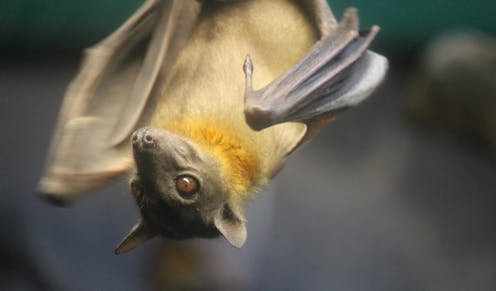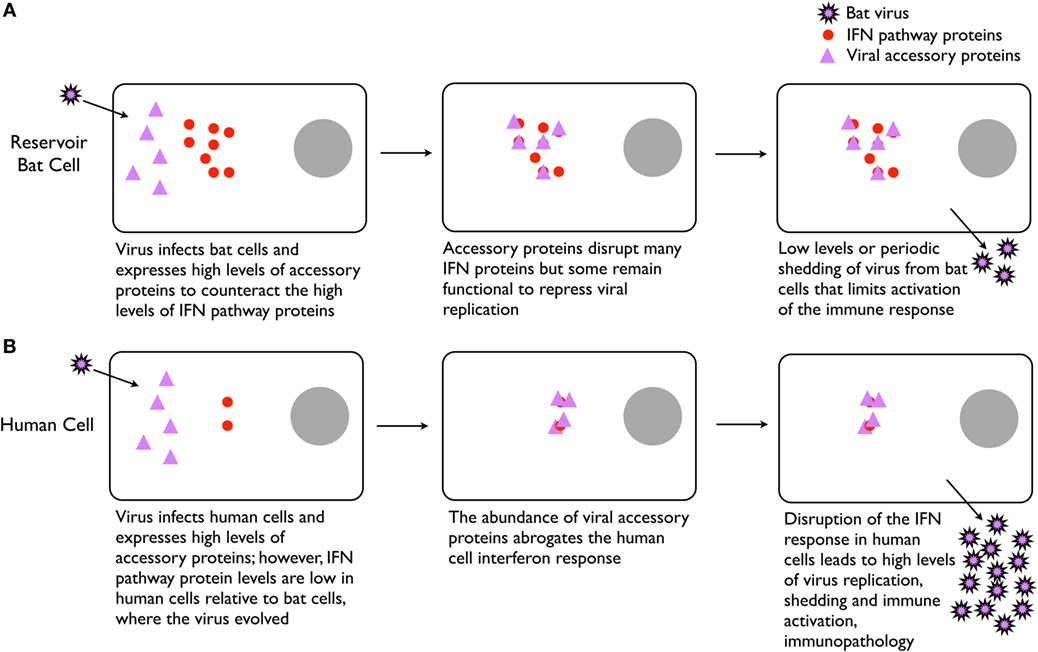BATS AND VIRUSES!!!
Post by: Shilpa Shantharam
Research studies made till now say that Bats are the reservoirs for the new virus (SARS COV-2) too. These mammals have always proved its presence in many of the previous outbreak of different viruses. In 1994, the "Fruit Bats" were the reservoir for the HENDRA virus which lead to the death of several horses and humans. NIPAH virus outbreak in Malaysia is believed to be the result of a bat to pig transmission. The EBOLA virus is suspected to have been spread from the former itself. Bats provide a natural reservoir for most of the SARS-like coronavirus. The present outbreak in China, Wuhan is also been speculated to be initiated by the bats. But the important fact to be questioned is why do these viruses do not have any effects on the Bat even though they house inside them?
 |
| Fruit Bat suspected to have transmitted HENDRA, Ebola and Nipah viruses |
Bats are the only flying mammals and approximately has a life span of 25 years. These animals have been continuously speculated to have been the reservoir of many zoonotic viruses. Several biological, ecological, immunological and genetic factor makes the bat more suitable to be the reservoir of new viruses. Bats have evolved over centuries to protect itself from such viruses. As these mammals fly their body temperature rises to 100 Fahrenheit and its heartbeat also increases to a noticeable range and even leads to a higher metabolic rate. These qualities are expected to be some of the reason for bats being unaffected by the viruses. Bats acts as a gene pool for the emerging viruses, The innate immune response of bats consists of pattern recognition receptor's(PRR's) and interferons which help in early diagnosis and control of viral replication inside their system. This helps in controlling the effects of the virus on the bat body. The humoral immune response involves an antibody attack on the entered antigen. The antibodies released forms a loose bond with the antigens, and the primary and secondary antibody response is delayed in the bats. This proves that bats have evolved not to overreact in response to various viruses. This property helps the bat to be asymptomatic. As mentioned in the earlier post, in humans the vigorous immune response is the reason behind the severe symptoms as they lead to the self-destruction of cells and tissues.
As these mammals fly and acquire a high metabolic rate and body temperature, that lead to higher levels of oxygen-free radicals. These increased free radicals cause damage to its cells, proteins and DNA. As providing an immune response to this is, energy-consuming bats might have evolved mechanisms to prevent the immune responses. This evolution now helps the bat to cope up with various virus by keeping Its immune responses against the virus under control. It shows lower inflammation associated with its combat with the virus whereas in humans the immune response leads to inflammation and hence worsen the condition. But the virus does stop the propagation by type 1 IFN(interferons).
 |
| Figure 2. A potential explanation for high virulence of certain bat-borne viruses in humans. (A) Infection of bat cells leads to high expression of viral accessory proteins that repress the constitutively active type I interferon (IFN) system, leading to low levels of virus replication and shedding. Low level or intermittent replication of virus delays and reduces stimulation of the immune system, thus resulting in weak adaptive immunity and poor antibody responses. (B) In human cells, the high expression of viral accessory proteins significantly disrupts the cell’s ability to control the infection, leading to high levels of virus replication and immune stimulation that contributes to pathogenesis. SOURCE: Frontiersin |
In addition to this bats have some prominent ecological factors which add up the excessive transmission of the viruses they carry. Bats are found in all continents except Antarctica. This provides them with a very large geographical stretch of an area where they can survive and hence increase the chances of transmission. Some species of bats also migrate to warm regions during winter. Hence, these bats can travel to a different region and also can transmit the virus.
There is no true evidence on direct transmission of any type of viruses from bats to humans. There is no straight evidence that proves humans coming in direct contact with the bat's faeces which led to transmission. The virus gets transmitted to an intermediate host and from there it transmits to humans.
 |
| Bats being the primary host needs an intermediate organism to transmit the virus |
So stigmatizing the bats just because they are the natural reservoirs should be prevented. These bats play a vital role in maintaining the ecological balance by helping plants with pollination etc. Like any other organism, the bats have evolved for their betterment hence blaming it for being the source of the virus is not credible.
Reference:
Interspecies transmission and emergence of novel viruses: lessons from bats and birds Jasper Fuk-Woo Chan1,2,3,4*, Kelvin Kai-Wang To1,2,3,4*, Herman Tse1,2,3,4, Dong-Yan Jin5, and Kwok-Yung Yuen1,2,3,4
Bats and Viruses: a Brief Review Lin-Fa Wang** ( CSIRO Livestock Industries, Australian Animal Health Laboratory and Australian Biosecurity Cooperative Research Centre, Geelong, Australia )




Comments
Post a Comment